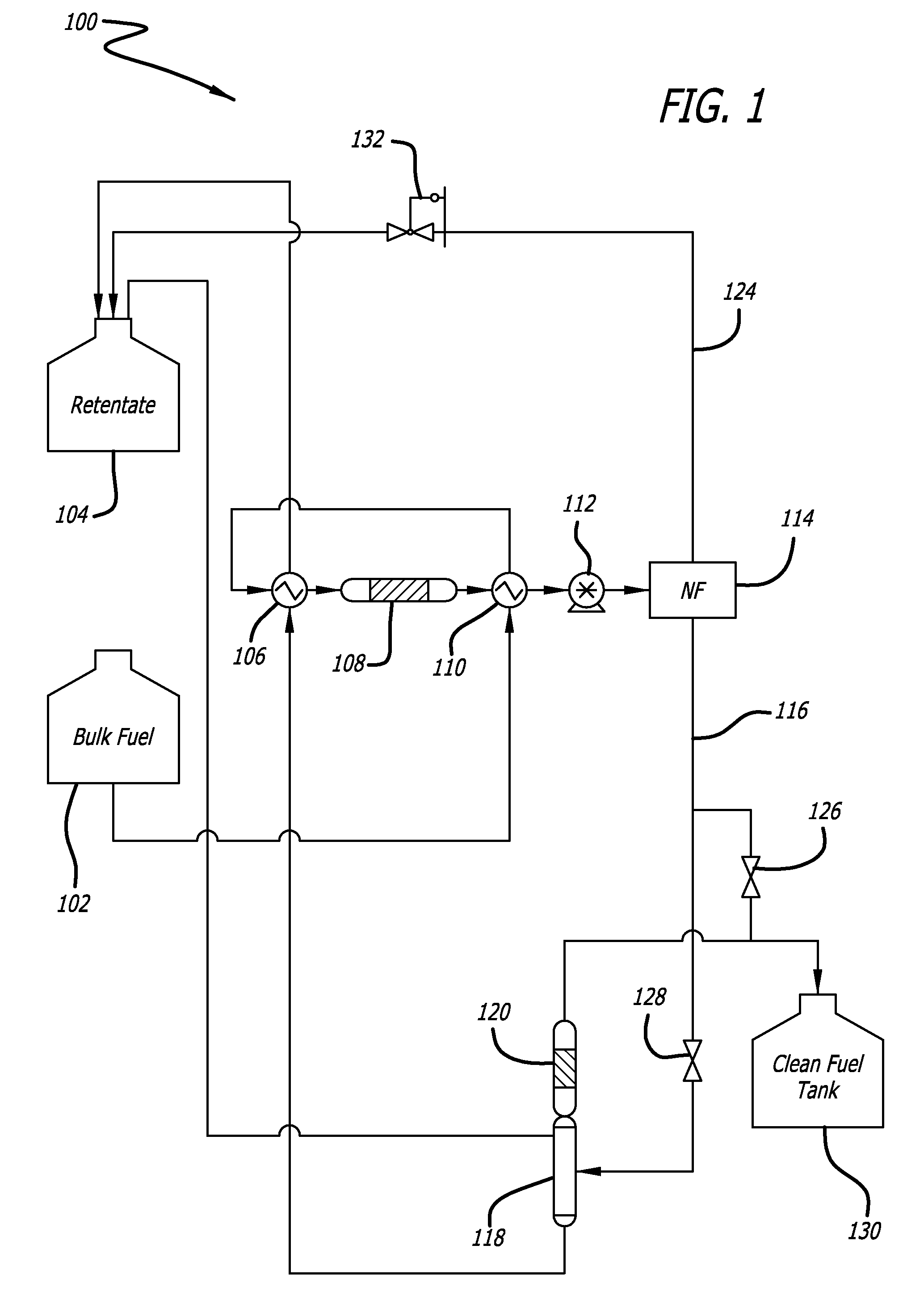In transit desulfurization of widely available fuels
a technology of fuels and transportation, applied in the direction of machines/engines, hydrocarbon oil cracking, mechanical equipment, etc., can solve the problems of contributing to the air quality problems of the region, significant adverse effects on public health, and substantial impact on emissions of ground transportation vehicles
- Summary
- Abstract
- Description
- Claims
- Application Information
AI Technical Summary
Benefits of technology
Problems solved by technology
Method used
Image
Examples
embodiment 560
[0132]If the mass ratio of the permeate stream 534 to feed stream 533 is high in system 500, resulting in heavier sulfur groups in permeate stream 534, the addition of a partial condenser is potentially needed. A preferred embodiment 560 of the processing system that includes a partial condenser 513 is illustrated in FIG. 9. In this embodiment 560 the vapor phase permeate 534 is partially condensed in heat exchanger 513 and isolated in separator 509 after passing through connection 535. The condensed liquid stream with heavier sulfur groups is pumped through connections 551 and 552 by pump 514 and returned to the tank 501. The vapor phase fraction of stream 535 is isolated by separator 509 and passed through connection 536 to RDS catalyst 507. As in the previous embodiment the remaining sulfur species in vapor phase stream 536 are reacted with reactant from connection 560 on catalyst 507. These sulfur species are converted into sulfur species that are more effectively adsorbed or ab...
embodiment 590
[0137]Another embodiment of the processing system 590 is illustrated in FIG. 12. In this embodiment 590 both the partial condenser 513 / separator 509 and the second stage membrane reactor 505 are included. A separate discussion of this embodiment 590 is not believed to be necessary, as the features of this embodiment are simply combined from those of embodiments shown in FIGS. 9-12.
[0138]The above described desulfurization systems and methods may also be utilized in other vehicles than marine vessels. In long distance trucking applications, for example, an onboard desulfurization system can provide a supply of cleaner fuel that the trucker can utilize while at a truck stop to minimize total contribution to atmospheric pollution at those locations in particular. Further, such fuels might be preferably utilized for startup operations in colder climates as well as during the long idling periods at truck stops, or at destination stops where truckers typically leave their rig engines runn...
PUM
| Property | Measurement | Unit |
|---|---|---|
| temperature | aaaaa | aaaaa |
| size | aaaaa | aaaaa |
| molecular weight | aaaaa | aaaaa |
Abstract
Description
Claims
Application Information
 Login to View More
Login to View More - R&D
- Intellectual Property
- Life Sciences
- Materials
- Tech Scout
- Unparalleled Data Quality
- Higher Quality Content
- 60% Fewer Hallucinations
Browse by: Latest US Patents, China's latest patents, Technical Efficacy Thesaurus, Application Domain, Technology Topic, Popular Technical Reports.
© 2025 PatSnap. All rights reserved.Legal|Privacy policy|Modern Slavery Act Transparency Statement|Sitemap|About US| Contact US: help@patsnap.com



